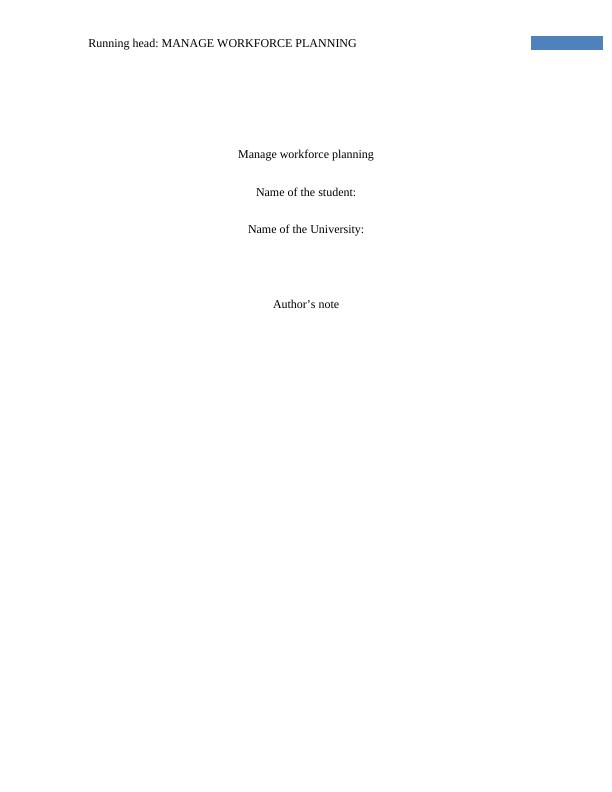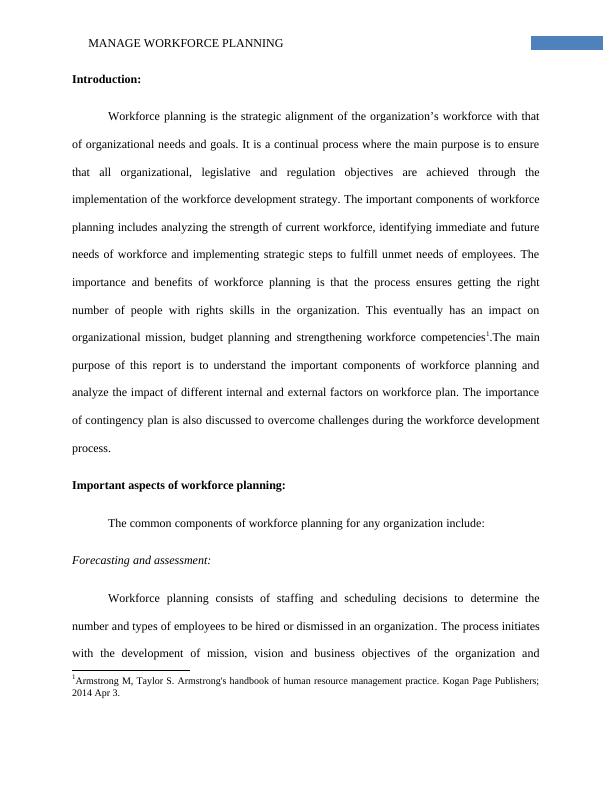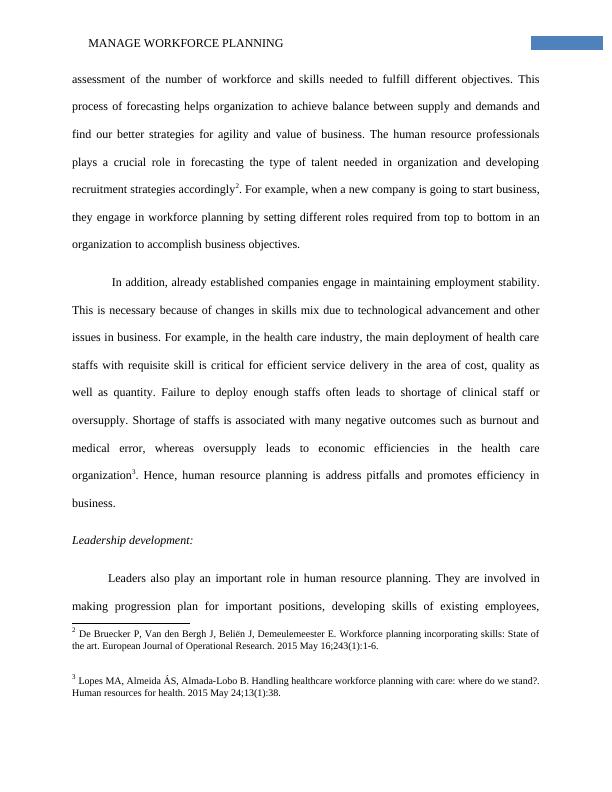Ask a question from expert
Manage Workforce Planning Name of the student: Managers
18 Pages4040 Words190 Views
Added on 2020-04-21
About This Document
This eventually has an impact on organizational mission, budget planning and strengthening workforce competencies.The main purpose of this report is to understand the important components of workforce planning and analyze the impact of different internal and external factors on workforce plan. Important aspects of workforce planning: The common components of workforce planning for any organization include: Forecasting and assessment: Workforce planning consists of staffing and scheduling decisions to determine the number and types of employees to be hired or dismissed in an organization. The process initiates with the development of
Manage Workforce Planning Name of the student: Managers
Added on 2020-04-21
BookmarkShareRelated Documents
End of preview
Want to access all the pages? Upload your documents or become a member.
Human Resource Management/ Recruitment process
|14
|3727
|70
Production Management: Designing, Organizing, Leading and Managing Manufacturing Process
|7
|1472
|473
Assignment on Workforce Planning
|5
|1032
|49
Human Resource Management in Wood Hill College - Case Study
|16
|5247
|39
Aldi Human Resource Management pdf
|17
|4913
|1023
Dependence of Australia on International Health Worker Immigration
|10
|2349
|21



